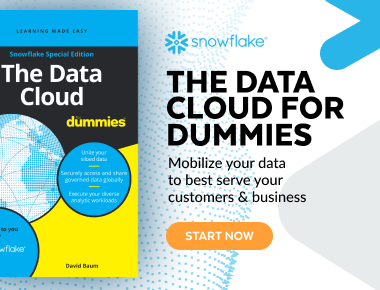Data governance is an organization’s management of its data availability, usability, consistency, and data integrity and data security. It defines who can take what action, upon what data, in what situations, using what methods and includes the processes, roles, policies, standards, and metrics for ensuring effective data management throughout the lifecycle of the data and for its use by the entire organization. Effective data governance empowers users to develop business insights from high-quality, secure, and trustworthy data.
Benefits of Data Governance
Every organization should have some form of data governance to prevent sensitive information from getting into the wrong hands. And if your company is large or in an industry subject to regulation such as healthcare or banking, data governance is critical.
The right practices, processes, and tools for handling and using your data ensure data security, availability, and quality — so everyone within the organization can use the data to fix business problems and discover opportunities. Additional benefits:
Regulatory Compliance
You may be considering your governance strategy as part of your need to comply with regulatory policies such as the European Union’s General Data Protection Regulation (GDPR) or the United States’ Health Insurance Portability and Accountability Act (HIPAA). These and other regulations necessitate that you trace your data from source to retirement, identify who has access, and know how and where it is used. Effective data governance ensures that data won’t fall into the wrong hands or be improperly removed.
Data Security
Data breaches, including the theft of information and inappropriate access to data, are an all-too-common occurrence. As with regulatory compliance, data security depends on traceability — knowing where the data comes from, where it is located, who has access to it, how it is used, and how to delete it upon request. Effective data governance prevents data leaks and misuse, thereby protecting your organization’s reputation and revenue.
Improved Data Quality
You can’t discover valuable data-driven insights from data of low quality. Effective governance increases trust in data. With effective data governance, you can identify when data is corrupt or inaccurate, when it’s too stale and irrelevant, or when it’s analyzed out of context. You can also identify siloed data and set rules and processes that integrate it among lines of business.
Data Governance Best Practices
Effective governance is achieved with a well-crafted strategy as part of an overall data governance framework. Here are a few essential best practices for a successful data governance strategy.
1. Start small
In the beginning, take advantage of existing opportunities to improve data management rather than attempt to tackle all data governance obstacles at once. Successful data governance projects include change management within the organization, so take small steps to test processes and communications and help everyone become more comfortable with changes.
2. Identify your data domains and define controls
Corral all your data sets and access points to find your data control points. This includes mapping out a detailed plan to define automated workflow processes, approval thresholds, reviews, issue resolution, and more.
3. Measure progress
Maintaining data governance best practices is an ongoing process. Include plans to regularly define, report, and measure against your data management goals. Metrics will naturally vary depending on your data size, scope, and sources, as well as how your data is disseminated both inside the organization — and potentially outside. A few metrics to consider include rate of adoption, number of data issues and events, and the program's overall cost, from data rectification to issue resolution.
4. Create a recurring, repeatable process
Developing a data governance strategy is not a one-and-done project. As your data volumes grow, new data streams and access points will emerge. Devise a policy for periodic reviews of your data governance structure.
Snowflake and Data Governance
Security and governance tools ensure sensitive data maintained by your organization is protected from inappropriate access and tampering and helps you achieve and maintain regulatory compliance. These tools support a wide range of operations, including risk assessment, intrusion detection/monitoring/notification, data masking, data cataloging, and more.
Snowflake Horizon Catalog along with a broad ecosystem of partners, including data governance experts Talend, provide a strong foundation for improved data governance. Snowflake interoperates with some of the industry's most widely recognized data governance and security tools such as Collibra, Informatica, Immuta, and others.
